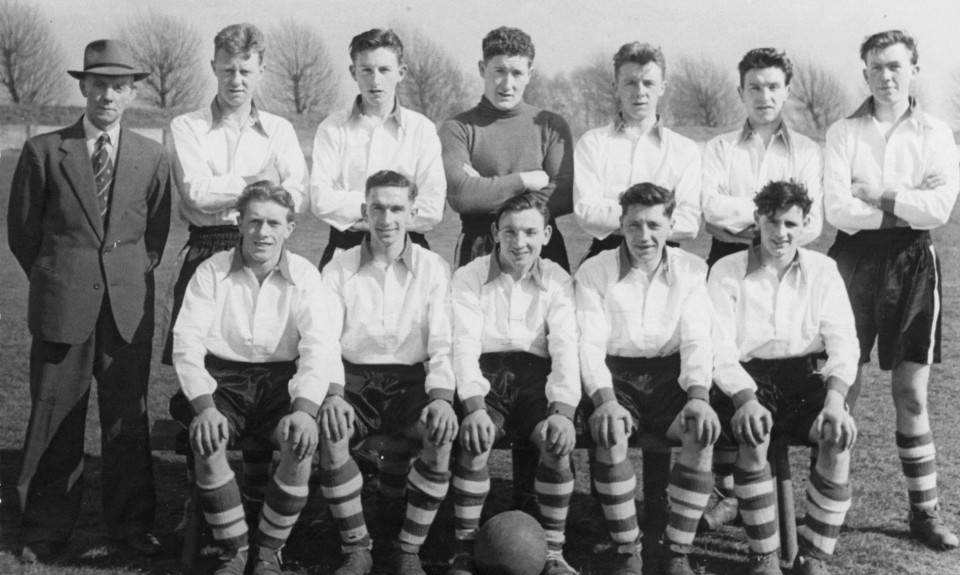Overhearing a conversation in a Broughty Ferry public-house, I decided to check out what I was hearing.
I didn’t intrude on the pair of jovial revellers but the gist of the tale is that one claimed Dundee junior club East Craigie were the oldest junior football team in Scotland.
The other said it was held by a Glasgow side but he couldn’t remember who.
And, coincidentally, a few days later, Graeme Curr handed me several photos of East Craigie, many of which were taken at their centenary dinner in 1980.
So that last line should tell you that East Craigie — nicknamed The Shipbuilders — were founded in 1880 and have had an unbroken tenure for the last 135 years.
I also know that is a long-held view of the local junior fraternity but I have to agree with the second ‘pub-goer’ that there are claims which provoke doubt by some in the west of Scotland.
Among the photos Graeme, from Newtyle, handed in was a booklet from their 1980 event.
The booklet — ‘East Craigie Through The Years’ — is William Elder’s account of the rise of the club.
In it is stated that Glasgow Parkhead were also founded in 1880 but several months before East Craigie and, after going into abeyance for a season after a dispute with the Scottish Junior FA, they took up their membership again.
A quick look in files reveals they packed up in 1963, so they are now ruled out.
There is also a school of thought that Kirkintilloch Rob Roy are currently the oldest, as their year of formation is given as 1878.
Any further input on this would be welcomed.
I asked Graeme what his connection with the Shipbuilders was, and he replied: “Willie Hennessey was by father-in-law.
“He was tasked with putting together the 1980 centenary dinner, which was held in the Marryat Hall in Dundee.
“Sadly, Willie is no longer with us as he died eight years ago.”
It would take at least 10 weeks of BwB to fully give the detail in the booklet but below are some extracts.
The year 1880 saw several young men employed at Wallace Craigie Works form a cricket team.
The approached their works manager Mr Robertson for a donation and he eventually supplied gear.
He also suggested to them that, instead of packing up at the end of the cricket season that they should stay together to form a football team.
They took the name Craigie and started playing against scratch XIs in Dundee and the surrounding district.
One of their early games was against West Craigie on ground at Stobsmuir.
The game had hardly started when a policeman chased them from the park.
Undaunted, they lifted the goalposts and headed down to a vacant piece of ground where the Caledon Shipyard was later built.
They completed the 90 minutes.
As they were no leagues or cups in those early days, friendlies continued to be the norm, playing against makeshift sides such as Rockfield, who were a team of lads from the Albert Street area.
Football boots were unheard of and players just wore their everyday boots, and shinguards were always worn outside the stocking similar to a batsman’s pad!
There were no crossbars or nets, with a tape being erected from post to post.
At times, the tape sagged and there were many arguments and discussions over whether the ball had went under or over the tape.
The name East Craigie came about when they approached the owner of East Craigie Farm for a donation and, after receiving a favourable response, decided to include East in their name.
The farmer also gave them a piece of ground, which is now known as Craigie Park.
Until the new ground was ready, they played games at Mayfield and Caird Park.
Junior leagues and cup competitions were starting to sprout up and EC were to come up against Violet, Harp, Forfar Perseverance, North End, Stobswell and Fairfield among others.
After some poor years, the signing of centre-half James Gilligan sparked an upsurge in fortunes for the club.
He was a great centre-half and a team of youngsters was successfully built around him.
He was also involved in other aspects of the club and was an expert in fund-raising.
Other great players to have worn the blue and white jersey of EC around that time included Jimmy Sharp (Dundee, Rangers, Fulham), Archie Taylor (Dundee, West Ham, Barnsley) and Frank Murray (Dundee, West Ham).
There was also Alex Gilligan (Dundee, Bolton Wanderers), Will Gilligan (Dundee, Derby County), John Gilligan (Dundee Wanderers, Clyde) and John Malloch (Dundee, Sheffield Wednesday).
Others were G ‘Poodle’ Forbes (Dundee Hibs, St Johnstone), Jimmy Easson (Portsmouth) and Tommy McAnearney (Dundee).
Among the photos of the centenary, I spotted my friend Peter Schiavetta among the guests.
Those familiar with Peter will know he is still a dapper dresser — and that was also the case 35 years ago.
Graeme Curr also sent in several other old photos of Dundee junior sides and I’ll use them in the coming weeks.

